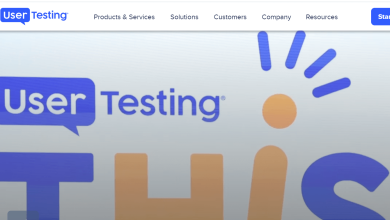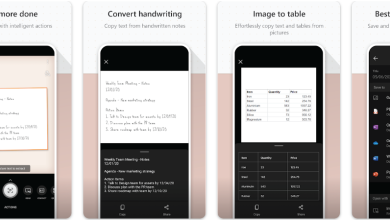RESTful Web Services: Top 20 Interview Question And Answers

The main reason for explaining what Web services and REST are above is to help you understand what “RESTful web services” means. More specifically, RESTful web services adhere to the REST architecture and deliver their functionality via the HTTP protocol. It has useful features like being easy to scale up and keep up with, making APIs, etc.
List Of RESTful Web Services Question
Okay, so let’s get going:
1: What do you know about RESTful web services?
Answer: SOAP (Simple Object Access Protocol) and XML-based RESTful web services employ the HTTP protocol. They have features like being able to grow and change, being easy to maintain, helping applications written in different programming languages talk to each other, etc.
RESTful web service implementation describes how the client can get to the different resources he needs after sending a request to the server through his web browser.
Some of the essential parts of this plan are:
- Resources
- Request Headers
- Request Body
- Response Body
- Status codes
2: Name the protocol that RESTful web services use
Answer: HTTP is a well-known web protocol used by RESTful web services. This is a way for the client and server to send and receive data. In RESTful web service architecture, standard HTTP methods are used to access resources.
3: What does “addressing” mean in RESTful Web service?
Answer: Just like we need a person’s address and postal code to get in touch with them, “Addressing” finds the resources on the server used to host web services. URI, which stands for “Unified Resource Identifier,” is often used to do this.
4: List the things that RESTful web services can do
Answer: Every RESTful web service should have the following features and qualities: Using the Client-Server model as a guide. Use the HTTP protocol to get information from a web service, get resources, run queries, etc. The server and client talk to each other through a process called “messaging.” Through URIs, resources on the server can be pointed to.
Based on statelessness, each client’s request and response are independent, and the needed information is always given. It makes use of the idea of caching. Uses the standard interface.
5: Explain Messaging Technique
Answer: Communication between individuals takes place through the exchange of messages. Like email, the HTTP protocol uses a request-and-response exchange to convey information between the client and server. The client notifies the server of the data’s existence via an HTTP request. The server then provides the client back an HTTP response. Messages are used to store metadata or sets of information about data.
6: What are the main parts of an HTTP request and an HTTP response?
The essential parts of an HTTP Request are:
- Methods like GET, PUT, POST, etc., are included.
- Uniform Resource Identifier is a way to identify the server’s resources.
- HTTP Version is used to say which HTTP version to use.
- The information about the data is in the HTTP Request header.
- The part of an HTTP request shows how the resources are used.
These are the most critical parts of HTTP Response:
- Request Code: This is a code list that tells the server how to respond.
- HTTP Version is used to say which HTTP version to use.
- The information about the data is in the HTTP Response header.
- The part of the HTTP Response shows how the resources are used.
7: What does “statelessness” mean regarding RESTful Web service?
Answer: In REST, State Transfer is defined by the word “ST,” and “Statelessness” means that a person is alone. This means that the application’s state on the client is never saved on the server and is instead passed on.
During this step, the clients send the server all the information it needs to handle the HTTP request that was sent. So, whenever a client asks for something, the answer is different, and always gives them the necessary information.
A “session identifier,” passed by each client, distinguishes between separate sessions.
8: List the pros and cons of not having a country.
In response to your previous question, we now know what “statelessness” means regarding server-client interaction. Let’s examine a few of the benefits and drawbacks right now.
Advantages:
- Each necessary means of interaction is demonstrated to stand alone, requiring no further means to function.
- All of the client’s or server’s previous conversations have yet to be saved. Everything becomes considerably more workable as a result of this.
- In cases where the client’s previously transmitted information or metadata is required for another method, it is resent in conjunction with the HTTP request.
- The RESTful web service and the HTTP protocol both hide their location.
Disadvantages:
- The web service needs client-state information in every HTTP request from the client.
9: Enlist some significant constraints for RESTful web services
Answer: Every constraint has beneficial and adverse effects, and architecture should balance them.
Some RESTful web service rules:
- Each server and client should have specific concerns to ensure modularity. This increases scalability and reduces complexity.
- The client and server should communicate statelessly, using no past data, and in a different context. It helps clients recover from failure.
- Client-server communication should allow HTTP replies to be cached to increase scalability and performance.
Fourth, a unified interface makes client-server interaction straightforward to grasp. This restriction has four sub-restrictions:
- Identifying Resources
- Ressourcenmanipulation
- Each message is self-explanatory.
- Hypermedia is the text that links to other parts of an application.
The client should only know the level of communication between a client and a server.
10: What is a “Resource”?
Answer: Just like we learned about the “Object” instance in Object-Oriented Programming Language, “Resource” is an object of a type that can be an image, an HTML file, text data, or any other dynamic data type. There are several ways
Here are some of the most common resources:
- JSON
- YAML
- XML
- HTML
11: Why is it essential to show resources correctly?
Answer: Representation is significant because it helps people find resources quickly. When resources are shown correctly and in the correct format, the client can easily understand the format.
12: List some essential things to consider when designing Resource representations for RESTful web services.
Answer: There are no rules about how the resource should be represented. The main requirement is that the representation format matches the client’s wants.
Consider the following for a suitable resource representation:
- The client and server should comprehend a resource’s format.
- The representation should be comprehensive and independent of its format structure.
- If the resources are linked to other resources, this should also be thought about and dealt with.
13: What is Caching?
Answer: Caching stores server responses so they can be used later without regenerating them. This decreases server load, improving scalability and performance. Responses can only be cached fast.
Below are the resource headers and descriptions for caching:
- Where a resource was made
- The last detail is usually the last modification time and date.
- Cache-header
- When the cached resource expires.
- The resource’s age determines how long it was used.
14: Tell me about the Cache-control header.
Answer: Gaining cache-ability is facilitated by using a standard Cache-control header. A brief explanation of the various cache-control headers follows.
Public: Resources marked as public can be cached by intermediate components between the client and the server.
Private: Only the client can cache resources that are marked as private.
If there is no cache, a specific resource can’t be cached, so the process stops.
15: What are the best ways to design RESTful web services?
Answer: Some best practices or points should be considered when making a secure RESTful web service.
Here’s how to understand them:
- The server should check everything that is put in.
- The input should be in good shape.
- It would help if you never used a URL to convey confidential information.
- The user needs to be verified before starting a session.
- If something goes wrong, just HTTP error messages should be displayed.
- Use a message format that’s easy to understand and what the client wants.
- The Unified Resource Identifier should be explicit and explain what it is.
16: What does “Payload” mean?
Answer: “Payload” is the name for the request data in the body of every HTTP message. The POST method can only send the payload to the recipient in the Restful web service.
You can send as much data as possible as the payload with the POST method. There is only one genuine concern, and that is the fact that transferring more data will necessitate more time and bandwidth. Also, the user’s time may be consumed by this.
17: Name a few HTTP methods and explain what they do.
Answer: Here is a list of HTTP methods and what they are used for:
- GET: This is a read-only method for retrieving the server’s user roster.
- PUT: This is the operation used to make a new resource on the server.
- Post: This operation is used to update an old resource or create a new one.
- DELETE: As its name suggests, the DELETE action removes data from the server.
- Options: This action retrieves the set of all server-supported options for the specified resource.
18: What’s the difference between the PUT and POST methods?
Answer: Unlike the POST method, the PUT method always returns the same result. However, the outcome of a POST operation is unique every time it is executed.
19: What do you know about the JAX-RS?
Answer: The Java API for RESTful web service is called JAX-RS. This is the best Java-based API that supports RESTful web service out of the many libraries and frameworks available.
Some ways that JAX-RS has been used are:
- Jersey
- RESTEasy
- Apache CFX
- Play
Most people use Jersey, which is one of these frameworks.
20: How do HTTP status codes work? Sign up for the few that matter.
Answer: HTTP status codes are, for the most part, a way to show the status of a task done on the server. Some codes also show how the task was done. Each code means something different.
The following describes the meaning
- Code 200: This means everything went well.
- Code 201: This means that the resource was created correctly.
- Code 204: The response body doesn’t have any content.
- Code 404: This means there is no available method.
There are only a few more status codes like these.
Conclusion
This article will help you prepare for an interview about RESTful web services and explain the concept in a way that is easy to understand. This article covers RESTful Web.




